Exposure Trip to Tokyo, 2019

During the Post-exam period, 30 of our F.1 to F.5 students, together with four teachers joined an exposure trip to Tokyo from 17th to 21st June. They experienced a fruitful journey filled with fun and excitement. They have visited various museums (e.g. Arts, Baseball and Sumo) and attended workshops such as the Team Lab in a local school. This overseas trip has exposed our participants to the latest technological development and widened their horizons through experiencing foreign cultures. It has been both exhilarating and inspiring.
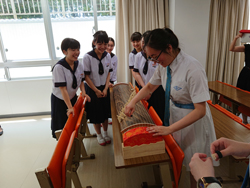 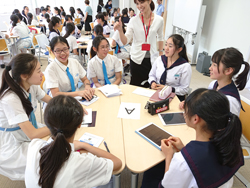 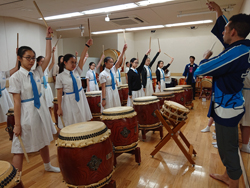
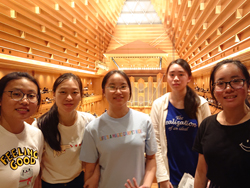 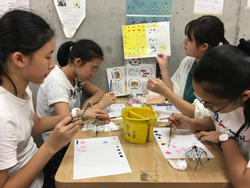 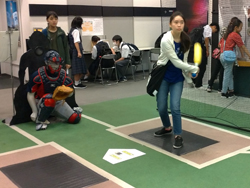
./
Language Exposure Trip to New Zealand, 2018

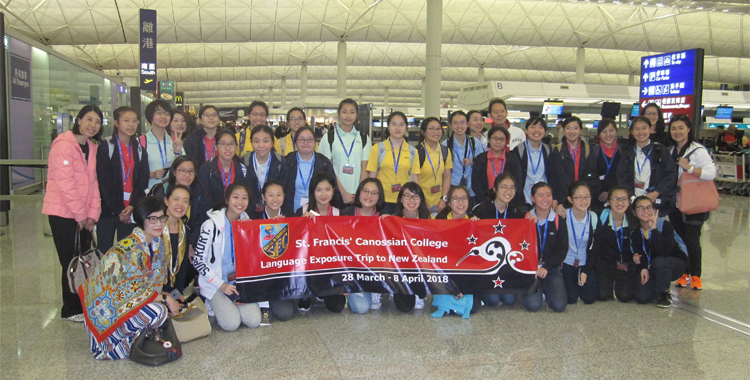
Twenty-nine Form 3 to 5 students took part in the English Exposure Trip to New Zealand 2018 during the Easter break. Students were fully immersed in an English environment for almost a fortnight.
On the first few days of the trip, they joined a series of excursions to Rotorua and Tauranga. In Rotorua, they learnt about the Maori Culture, the volcanic activities and unique landforms of New Zealand and the flora and fauna of the country. Through visits to a farm, a kiwi orchard and a honey centre, participants had a brief understanding of the major industries of New Zealand. In Tauranga, the water quality testing and estuary study done in Maclarens Falls Park and Bay of Plenty respectively inspired students to ponder over the importance of achieving environmentally sustainable development.
Another highlight of the trip was the school experience at Baradene College of the Sacred Heart in Auckland, where the students had a taste of what school was like in New Zealand through a buddy programme. Certainly, students will not forget their homestay in Tauranga and Auckland. Not only did they experience the New Zealand way of life but also enjoyed the warm hospitality of their hosts.
The exposure trip was truly an eye-opener for the participants. It helped to boost their confidence in using the English language, enabled them to acquire academic knowledge of multiple disciplines, raised their environmental awareness and promoted personal growth.
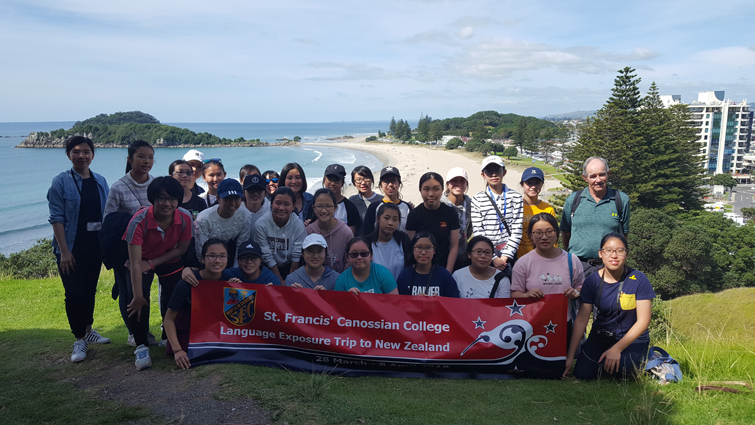
 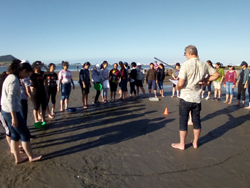 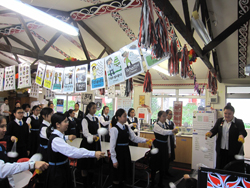
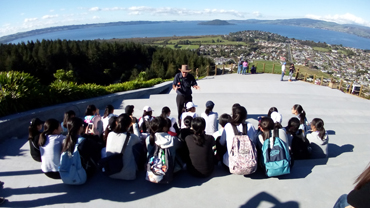 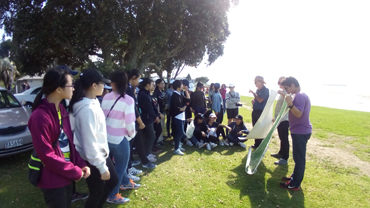
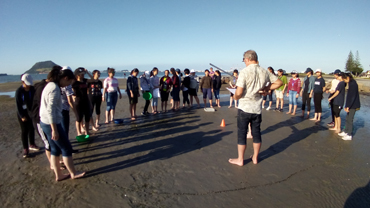 
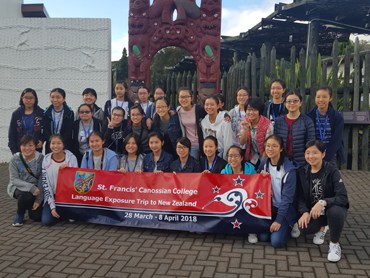 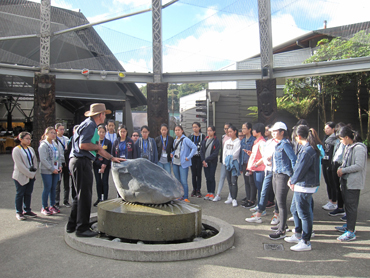
 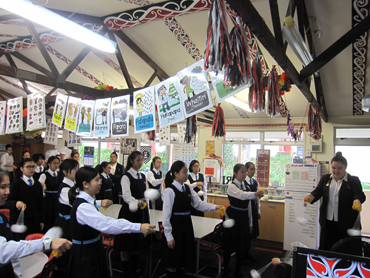
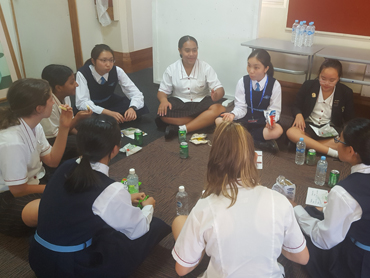 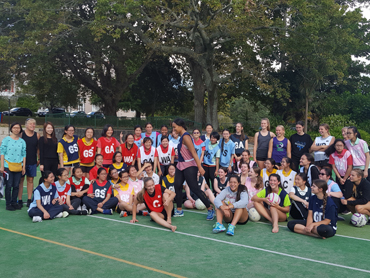
./
STEM Exposure Trip to Korea, 2017


During the Easter holiday, 36 of our F.2 to F.5 students, together with 4 teachers, have joined a STEM exposure trip to Seoul from 19 to 23 April. They have experienced the latest technologies in Seoul and also explored Korean culture and development through visiting various museums and historical attractions. The visits to Samsung Innovation Museum (SIM), AmorePacific Beauty Products Factory and Digital Pavilion were eye-opening. Students have learnt more about the industrial and technological development in South Korea. Another highlight of the tour was the visit to KBS On. This has deepened students’ understanding about the broadcasting industry while experiencing first-hand the production process at one of the nation’s top broadcasting company. Two of our students took up the role of the news anchors at the News Experience Corner and performed impressively. Last but not the least, our students also enjoyed memorable moments wearing Hanbok, making Kimchi and appreciating the wonderful performance by the local students and teachers in Sindo High School during our visit.
KOGAS Science Museum (Day 1)
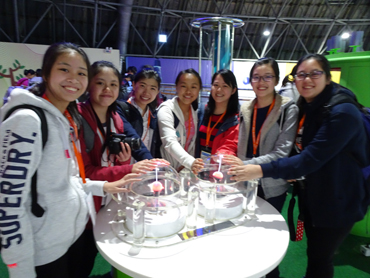 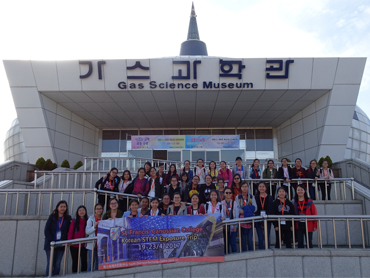
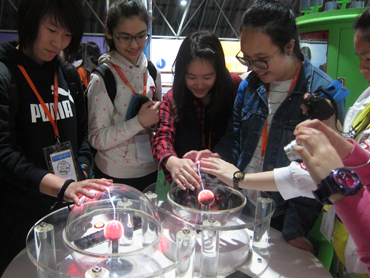 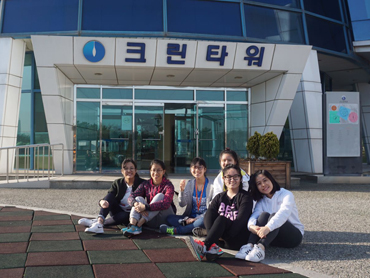
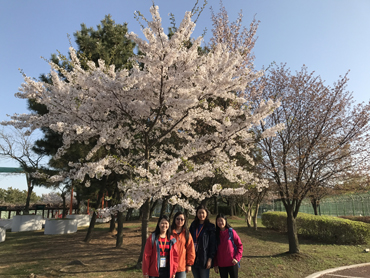 
Visit to Sindo High School (Day 2)
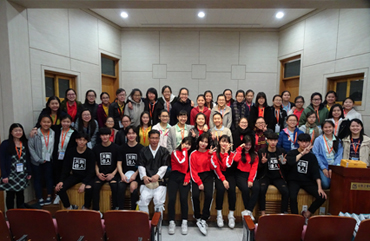 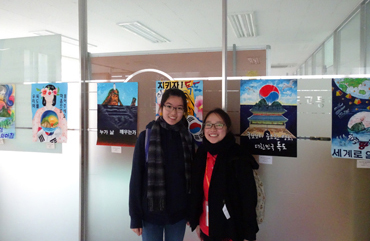
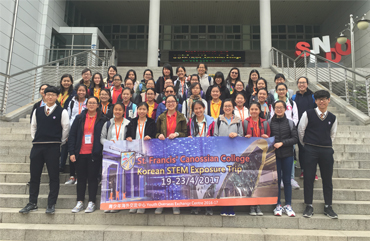 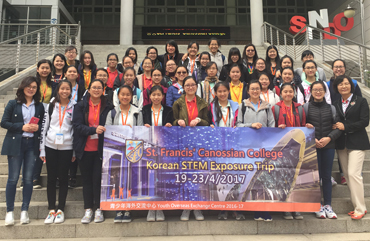
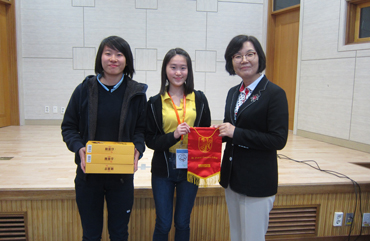 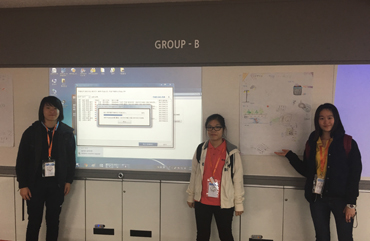
At Myeongdong Cathedral (Day 2)
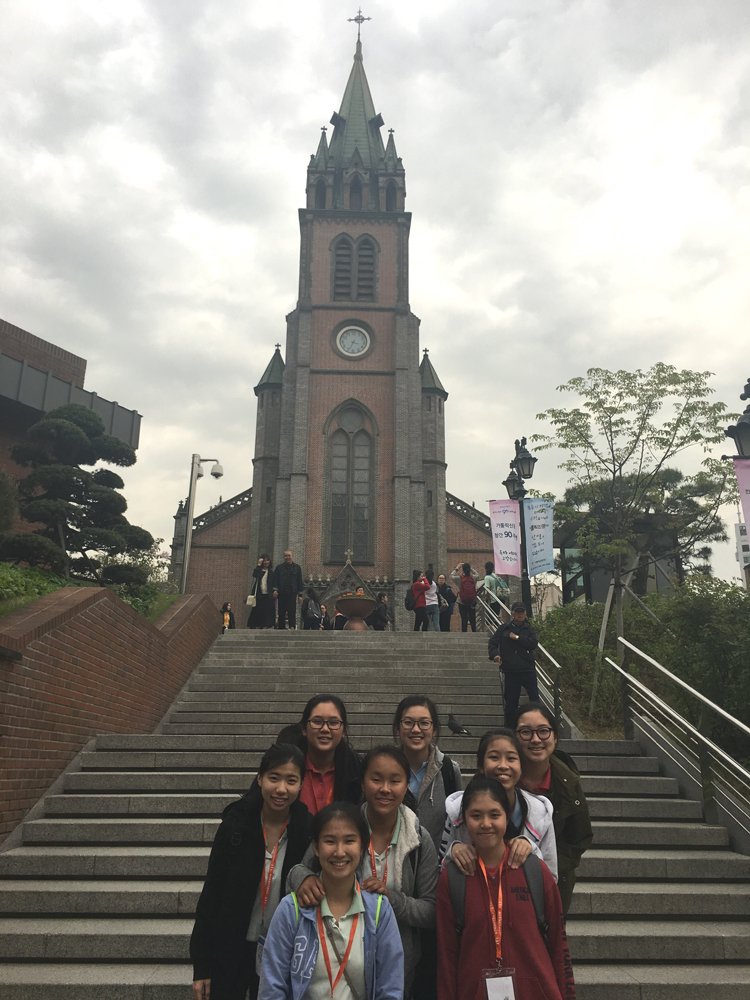
AmorePacific Beauty Products Factory (Day 3)
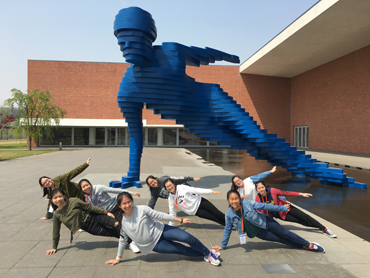 
At KBS ON (Day 3)
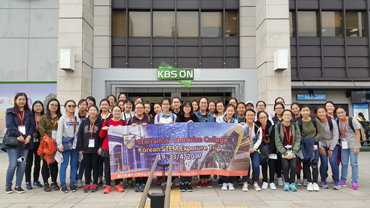 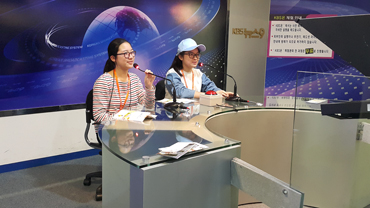
 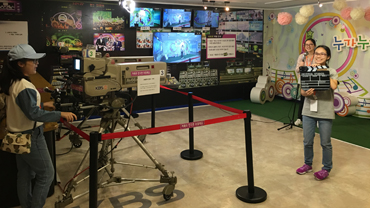
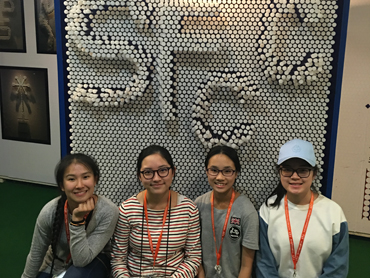 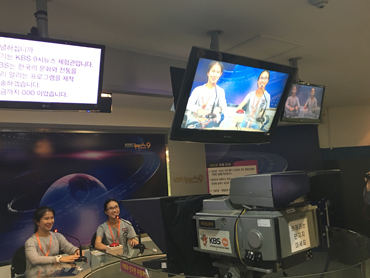
Kimchi-making (Day 3)
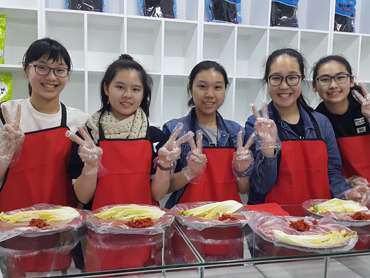 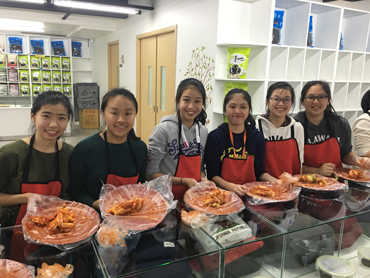
Hanbok trying (Day 3)
 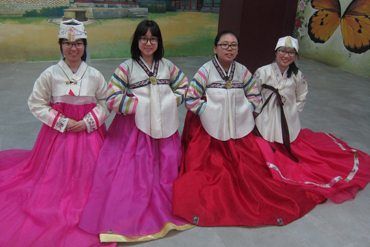
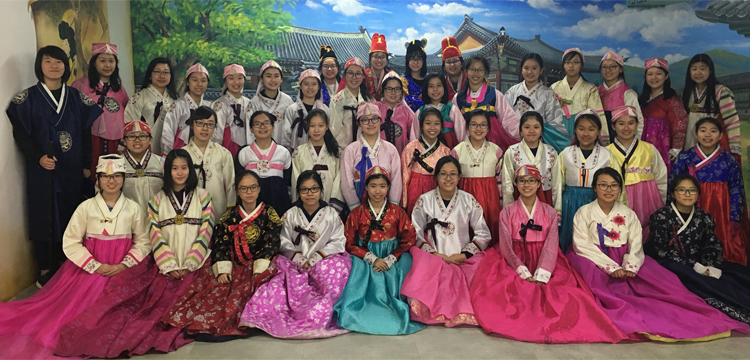
Samsung Innovation Museum (SIM) & Samsung D' Light Shop (Day 4)
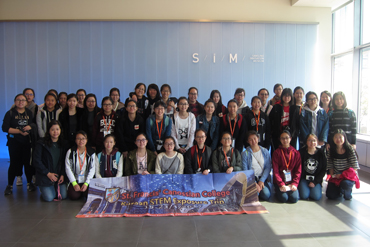 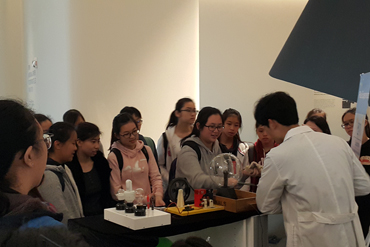
 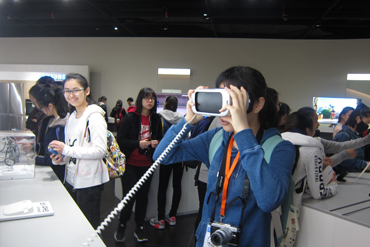
Digital Pavilion (Day 4)
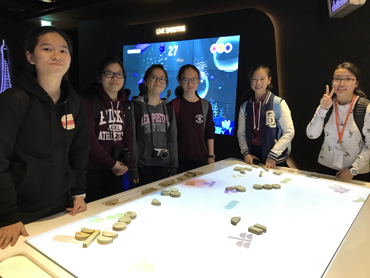 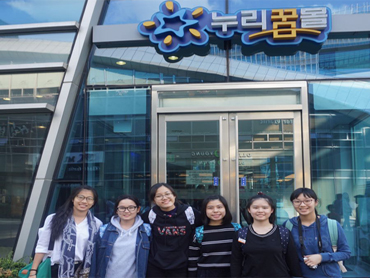
./
Back to Top
./
./
福建歷史文化考察之旅 2016

./

./
於二零一六年三月三十日,我校四十四名師生參加了由香港政府主辦,亞洲旅行社協辦的「同行萬里」高中學生內地交流計劃,前往福建省進行四天的歷史文化考察之旅。在這四天中,同學於廈門遊覽了不少名勝古蹟, 如鼓浪嶼、陳嘉庚故居及土樓等,大開眼界之餘,亦加深了她們對廈門,以及內地歷史文化的了解。此外,同學更參訪了集美中學、華僑大學及古龍醬文化產業園,是次考察活動令她們對內地的學習環境及企業文化增加了不少認識。總括而言,四天時間雖短,但同學卻獲益匪淺。
./
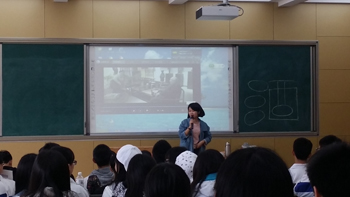 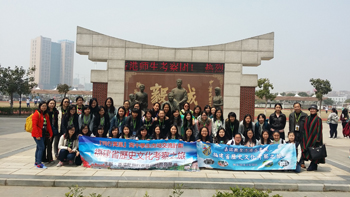
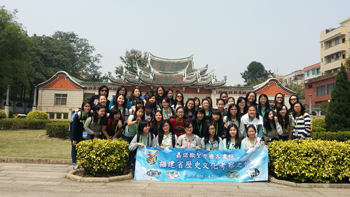 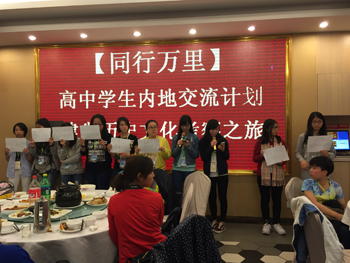
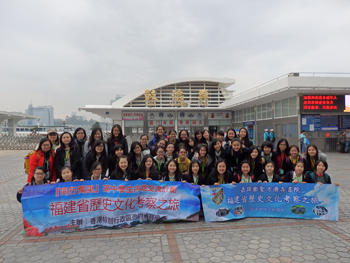 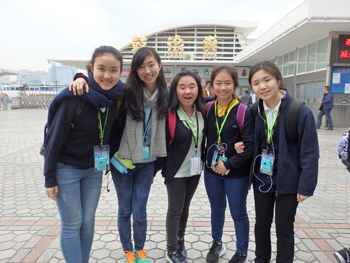
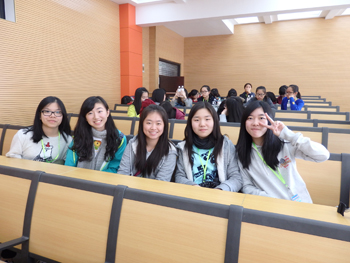 
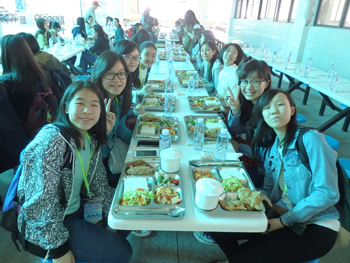 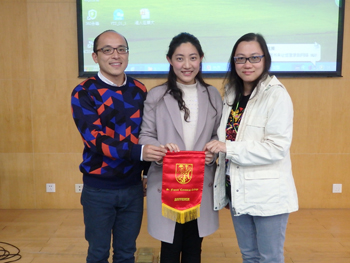
./
Back to Top
./
./
Science Exposure Trip to Taiwan, 2014

./

./
In the past Easter holiday, 36 F.2 to F.5 students, accompanied by 4 of our teachers, went on a science exposure trip to Taipei. The trip aimed to increase our understanding of science and the environmental protection strategies adopted in Taiwan.
One of the highlights of this trip was the visit to the Shulin Refuse Incineration Plant. They embraced full mechanization to handle the waste which reduces the chance of contact with the waste. The machines installed are able to attenuate the size of the waste. The pollutants emitted out through the chimney during the combustion process are transparent in colour and without harmful substances as it has gone through multiple filtrations. All dioxins produced are absorbed or decomposed. This can minimize the impacts brought to the environment. Another feature of the incineration plant is the odour control policy adopted. They have installed large ventilation system at the refuse bunker and the process of transporting and handling of waste is completed in a sealed environment to reduce its odour. In addition, the light energy generated during combustion will be used by the incineration plant or sold to the electricity company, as well as the ashes generated will be used to make bricks. After the tour to Shulin Refuse Incineration Plant, we understood more about the pros and cons of incineration. Additionally, the ‘colourless, odourless, non-toxic’ results of incineration and the utilization of resources were high appreciated by us.
./
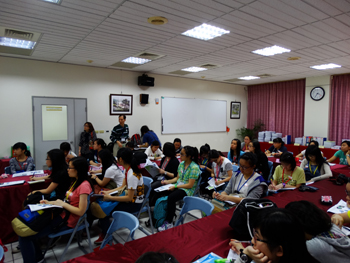 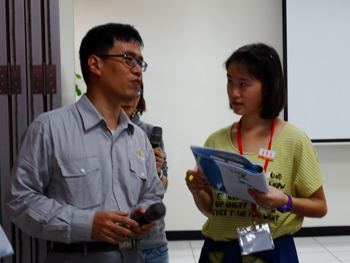
./
Another highlight of the trip was the visit to Ming Chuan University (MCU). MCU is a private university which offers a wide variety of faculties for students to choose. We were given the opportunity to visit the teaching complex, Department of Applied Japanese, Department of Applied Chinese Literature and the Department of Travel and Tourism. We were amazed by the decoration of the departments. It provides a snug environment for the students to study and students can become more engaged in learning. After the visit, our overall perception of MCU was that it is a student-oriented university that provides high quality of education with respect to its pleasant learning atmosphere.
We also had a chance to visit the Tzu Chi Recycle Station. The plastic bottles recycled will be decomposed into threads and then woven into mats by the volunteers. The mats will be sent to disaster areas for the needy. We helped the volunteers to step on the plastic bottles and make it flat and sort different types of waste paper. It was a marvellous experience for us and we all had a more thorough understanding of the recycle and environmental protection work of Taiwan.
Another focal point of our trip was the visit to the Robot Museum located in the Taipei Chengshih University of Science and Technology. The museum contains "Bionic Robot Hall", "Humanoid Robot Hall", "Taiwan Robot Hall" three theme halls and two special galleries, and is the world's only robot museum. There are over 1,000 collections of robot, including industrial robot, navigation robots and insect robots etc. Through the interaction with robots, we could understand more about the principles and production, as well as the functions of different types of robots. In order to know more about the control and manufacturing of robots, a robot without instructions inputted was given. Our task was to input instructions to the robot so that the robot could move according to our command. Although we encountered a lot of difficulties during the inputting process, it trained us up with patience and the ability to solve problem by ourselves. It was an experience that whetted our curiosity in a stimulating learning environment.
./
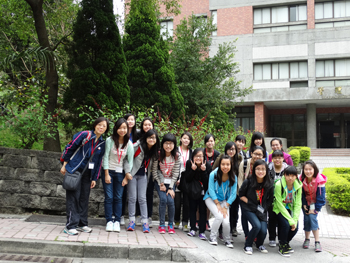 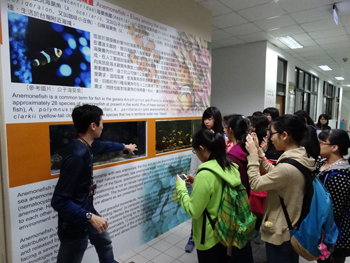
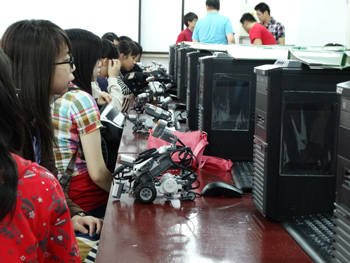 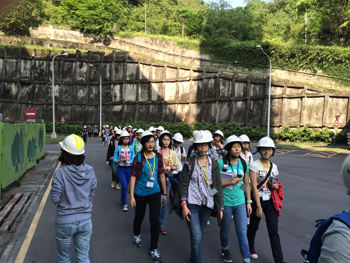
./
We have also visited the Taipei Neihu Technology Park (TNTP) Discovery Hall and National Taiwan Science Education Centre (NTSEC). The TNTP is the most important presidio of hi-tech industry in Taipei City. The discovery hall introduces the TNTP and the technological development in Taiwan. During the introduction of TNTP by the guide, we were startled and impressed by the model of the TNTP shown underground. On the other hand, the NTSEC is an excellent place to refine our scientific knowledge. It is the only national centre for science education in Taiwan. It consists of five areas, the Life Sciences, Physics, Chemistry, Mathematics and the Earth Sciences. Most of us were interested to interact with the exhibits. This surely deepens our understanding and consolidates our concepts and knowledge apropos of science.
./
Taipei 101, Eslite bookstore, Tamsui Old Street and waterfront, Shilin Night Market, Shilin Official Residence, The Martyr Shrine and Sansia Old Street are some famous tourists’ spots of Taiwan. Taipei 101 is the highest building, as well as the landmark of Taiwan. The design of Taipei 101 is based on Feng Shui which hopes to bring a more prosperous economy for Taiwan. The Eslite bookstore is one of the largest retail bookstores in Taiwan. Various genres of books are available and a reading atmosphere is established in the store as well as in Taiwan. We got a glimpse of authentic culture of Taiwan by visiting the Tamsui Old Street and waterfront, Shilin Night Market and Sansia Old Street. The walk to these three places provided an opportunity for us to relax and most importantly, learn more and feel more about the unique Old Street and night market culture of Taiwan. The Shilin Official Residence is the former residence of late Republic of China President Chiang Kai-shek. The residence is enormous with beautiful and charming scenery. Our visit coincided with the flourishing of roses and it was a great chance for us to unwind. Lastly, we were shocked by the performance of soldiers at The Martyr Shrine. They were required to stand sentry for an hour under hot weather. We were also amazed by the ordered and splendid handing-over ceremony of soldiers. We certainly admired the endurance and patience of the soldiers.
./
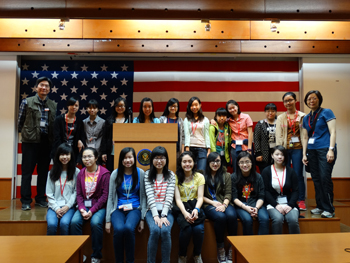 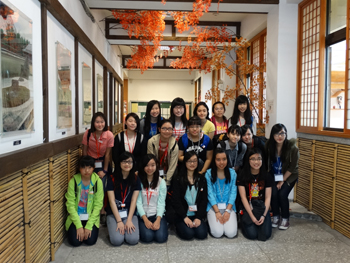
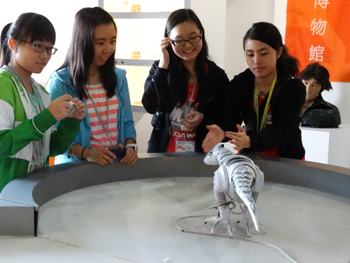 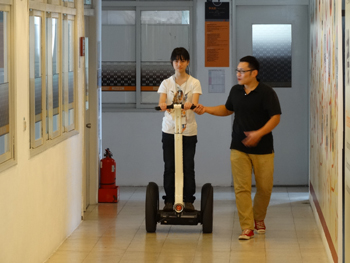
./
The four-day trip to Taiwan was really short. However, we have gained a lot not only on scientific knowledge and environmental protection, but the unique culture of Taiwan, and most importantly, the interpersonal relationship as well as our reflections on our lifestyle and attitude. Skills that I have learnt from the trip are we should be always ready to learn and accept new things and take the initiative to ask questions and find out the answers. The trip allowed me to enrich my own scientific knowledge and trained me up. It was definitely a precious, cherishable and memorable one for our students and teachers!
./
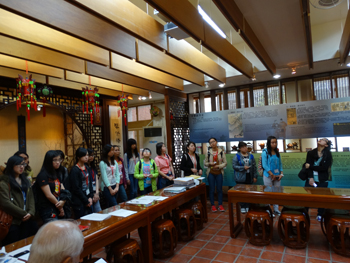 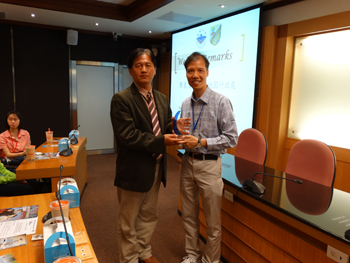
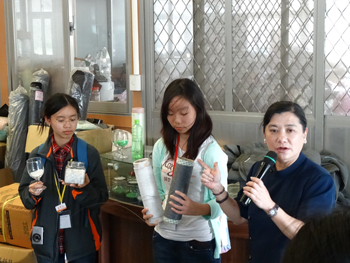 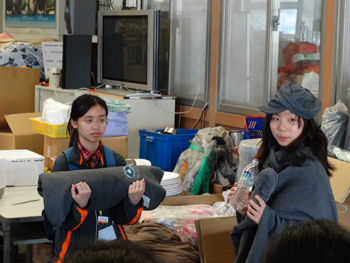
 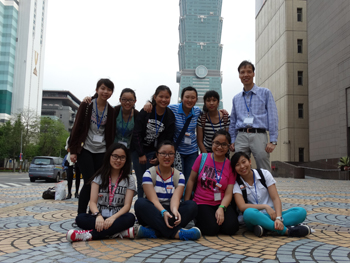
./
Back to Top
./
./
I.T. Exposure Trip to Singapore 2011

./
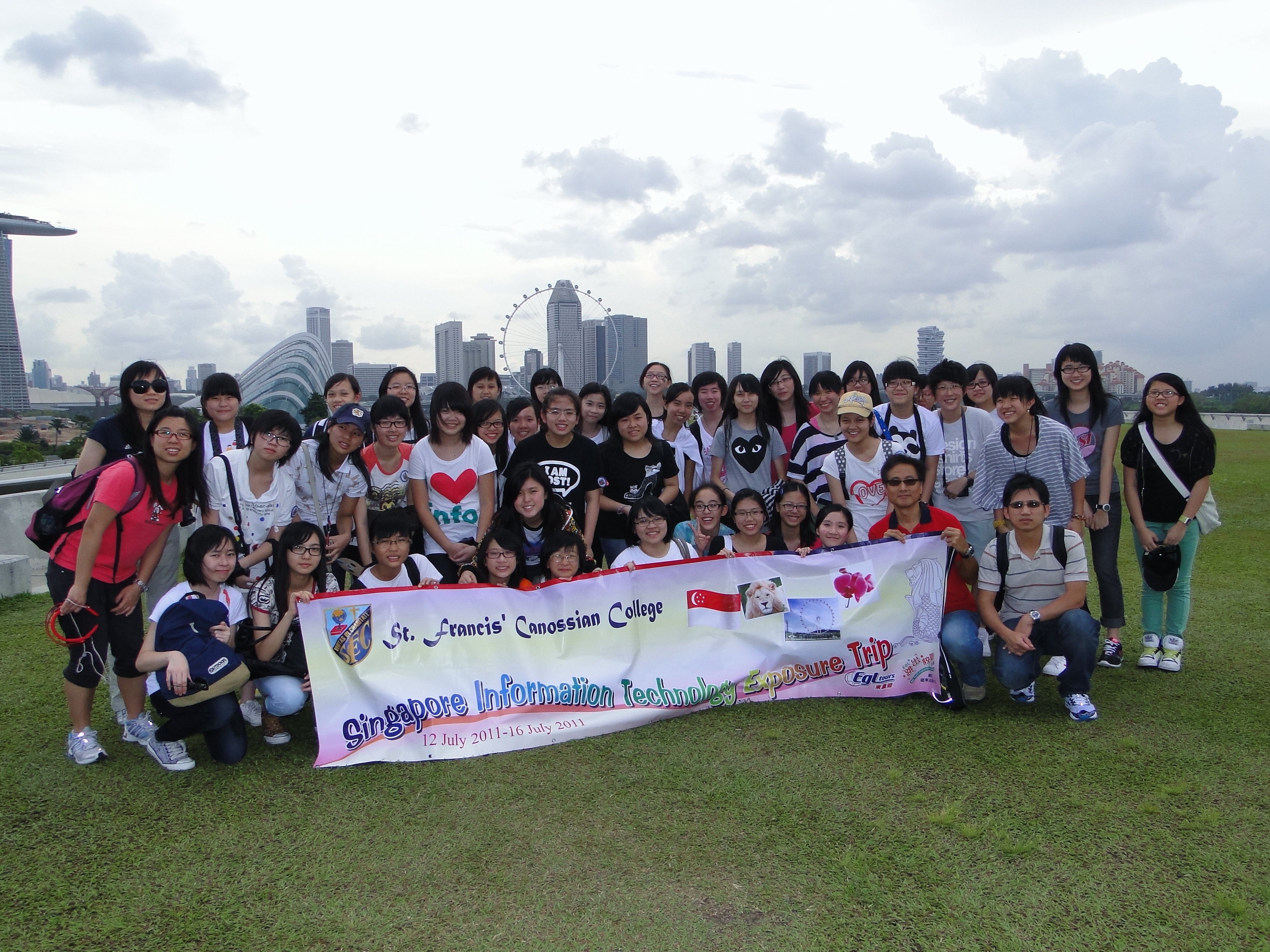
In this past summer holiday, from 12th to 16th July, 40 students, together with 4 of our
teachers went on to an exposure trip to Singapore. The first stop in Singapore is the
Discovery Centre, where the history of Singapore is displayed. Different countries such
as Britain, Japan and Malaysia had governed Singapore. In 1965, Singapore became an
independent country. Information there is shown in interactive way; for instance, visitors
can work as a professional reporter! In the studio “On Location Reporter”, Mr. Shek
reported on Singapore’s aviation news. We all enjoyed the playback!
On the second day of the trip, we visited St. Anthony's Canossian Secondary School,
an all-girls school founded by the Canossian Missions. The musical band used some
special musical instruments to play and welcome us. We were all very pleased and
excited about this school visit. We met with the young and energetic Principal, Ms.
Martens. She introduced the school history, mission, teachers’ creed, staff and the
students’ achievements in academic studies and extra-curricular activities. In the second
part of the introduction, the ICT teacher, Mr. Mohamed, also explained their ICT vision
and the four ICT goals to us. When he showed us the video made by the students, we
were amazed and impressed because they could purely make videos like the news
report with high quality by using some common video editing software. We all
appreciate their endurance as editing and combining different video clips takes a
long time.
After that, we chatted with the girl guides
about our hobbies and school life for a while.
They then took us on a campus tour! We
strolled around the school and visited some
classrooms. For instance, in the computer
room, we learn how to make a CV. We also
joined an ICT lesson, and had a quiz about
the service standards of Singapore on their
school website for their English projects. The
students there were very willing to help us.
They claimed that they seldom sit in an
ordinary classroom to have lessons nowadays.
We then played poker cards with the girl guides after the lessons. The people at
St. Anthony’s are hospitable and amiable. We got endless topics of conversation with the
girl guides. We also exchanged our means of contact.
Through this visit, we have learned how IT is
widely used in education in Singapore. The
students hand in their homework through the
Extranet. They even sign in to school every
morning using their thumbprints! IT is very
useful in learning and is closely related to us.
We had a memorable learning time with the
students at St. Anthony’s.The next day we visited the Nanyang
Technological University, which was an inspiring
trip. We had hands-on experience of the latest
technological developments of the research
team at the Centre for Advanced Media
Technology. There were many interesting and
innovative gadgets. The software designed by
Ms. Sim and her teammates uses the web cam
in an iPad to create a 3D image! The computer
can show the 3D view of the image or the
historical event that had happened in that place.
We were both amazed by the advanced
technology!
Other amazing software included the Chinese
learning game is also amazing.When we put
some simple Chinese characters such as 牛 in
front of the camera, the image of a cow will be
displayed on the computer screen. It is even clever enough to show the picture of a carton of milk when the words 牛奶 are put next to
each other! We have also tried the multi-touch table, which allows us to explore the
design of a whole building just by a touch of a human hand on the floor plan displayed
on the multi-touch table. The research engineer, Mr. Andreas, told us that he’s been
working on this project for two years, from designing the building to the implementation
of the software.
From this visit, we were so impressed by how
technology is developing nowadays. It was fascinating
to try out these new gadgets. It was a wonderful
experience to try out these newly developed
softwares. On the fourth day, we went to Canossian Eduplex.
Canossian Eduplex comprises Canossa Convent
Primary, Canossian
School, Magdalene’s
Kindergarten,
Canossaville Children’s
Home and the Convent
of the Sisters. We spent
the whole morning at
Canossa Convent Primary
School.
That day was a co-
curricular Activities Day,
so we got to see the
aesthetic performances of the students. First, we joined the choir practice in the theatrette. The choir had won
awards in Singapore Youth Festival Competitions. The choir, known as Voices of Youth,
belted out their melodies heartily. We then followed the majestic and enchanting tunes to
the Band Room and look the jazz band practice. The talented students play the
instruments really well! We also joined the Contemporary Dance Team in the Hall. The
students taught us some simple dance steps. The girls bent and flexed, swung and
stretched, showing us what they had learnt. We all felt refreshed after stretching our
arms and legs!
Apart from extra-curricular activities, we also joined their lessons such as the English
lesson. We joined the primary school girls in creating a story on the Mac Book. Each pair
of students had to include a good character and a bad guy in their story. After that,
We went to the Camino Room, that is the Archive Room, we learned of the development
of the Eduplex. There is the painting of our Foundress, Magdalen of Canossa, whom we
are all familiar with. Sister Mandy also shared the history of the Canossian Missions with
us.
We have learned more about the work of the Canossian Sisters in Singapore. The Eduplex
is the result of a dream and following in the footsteps of St. Magdalen, reaching out to
embrace all persons in order to develop their full potential. The five sectors of the
Canossian Eduplex work together towards a mission of Love, sharing resources, space,
and facilities to give a holistic and effective education to the children. We went to the Infocomm Experience Centre, or in short, iExperience on the last day of
the trip. The exhibits were divided into four major themes: Live,Work, Learn and Interact.
We were impressed by the Tele-presence technology. It allows people from different
locations to meet, discuss and share information. Without such technology, people’s
interactions would be restricted by location and time. Another invention is an electrical
global map with touch screen.
“Senseable City” presents a
different perspective of
Singapore’s urban dynamics. It shows details of streets, buildings
and even other features when
magnify it. It is amazing how a
map on paper can be evolved
into a touch-screened map. It
shows the advancement in
electronic visual display in
Singapore. Touch-screen
technology is becoming more
common in our daily lives. I am
sure it can be applied to other
fields in the future.
The Singapore government has
made a lot of efforts to attain the
present achievements. We all hope the people in Singapore and Hong Kong can work
together to discover new possibilities. This Singapore IT Exposure Trip allows us to know
more about Singapore’s culture, history, economic conditions and how the Singaporeans
made good use of technology in their daily lives. This trip indeed brought me a lot of
precious moments with our tour guides, teachers and schoolmates. Furthermore, it has
enriched my knowledge on the use of technology.
Back to Top
./
Education and Cultural Trip to London 2006

You may think one should not expect too much from an eighteen-day educational trip to
London, the first of its kind held by our school. Yet, the ‘British’ summer in 2006 was
indeed an eye opener for all its participants, both the students and the accompanying
teachers. We made friends with schoolmates from Form 1 to 3, had a lot of fun and
experienced living independently of our parents. Most importantly, we learnt more about
the English culture and became more confident users of the English language.
‘One, two, three,...’twenty four,’ said Ms. I. Ho, Ms. R. Lee and Ms. A. Tang. ‘Good. You’re
all here. Let’s proceed to Customs.’ Our trip began. It all began with us waving goodbye to our mums and dads in the
departure lounge.
It was not at all easy to fight jet lag on the first day of our trip, especially after a long-haul
flight from Hong Kong. I still remember entering Langley Park School for girls for the first
time. We climbed up two flights of stairs to reach a room where we were greeted by a cheerful teacher in a summery floral
dress. That was the very first workshop
we attended - the etiquette workshop.
There we learnt some British table
manners which were essential for our
survival with our host families.
After the workshop, we all sat in the
shade of an enormous mushroom-
shaped willow tree at the school gate
waiting anxiously for our host families.
What will our host mums and dads be
like? Will we get along? What will their
house be like? Will I get used to staying
there? We all had one question after
another until we saw our guardians
approaching us with beaming smiles.
They must have forgotten the fact that
we were total strangers to them. Our
instinct told us that our apprehensions
were unfounded and our experiences
in the ensuing two weeks were solid
proof that we were right.
From Monday to Friday, rain or shine, our host family members drove us to school early in the morning. Every day, we had an
English class. In the afternoon, we attended workshops of various kinds. In the dance
workshops, we learnt a bit of Scottish dancing and practised a dance we would perform
in the farewell presentation. In the poetry workshops, we wrote haikus, shape poems and learnt to recite Traveller’ in a choral
speaking performance. The drama workshops were especially interesting. We did
story-telling, freeze-frames, tableaux and acted out a scene from Romeo and Juliet.
Our host mums and dads took us around the town whenever they had time. We strolled
down the main streets of Bromlet, we barbecued at their friends’ houses, we picnicked in
a huge park with a duck pond, we chatted, we laughed and they took us in their arms
when we felt homesick. We had unforgettable packed lunches - freshly made sandwiches
or pasta salads our host mum prepared for us every morning. We will be forever
grateful for their hospitality.
What was the best part of the trip? No doubt, it was the excursion every Saturday. No
lessons, no homework, no hassie, only fun and play. We visited Cambridge, Chiselhurst
Caves and Leeds Castles and saw a musical, The Lion King, in the West End of London.
The Chiselhurst Caves were eerie. It was pitch-dark and freezing cold inside, a mere
five degrees Celsius. According to the tour guide, the caves weer once used as an air
raid shelter and had electric lighting, a chapel and a hospital during World War II. It had
a distinctly menacing atmosphere which reminded us of creepy horror movies.
By the seventeenth day, the realization dawned that the tour had inevitably come to a
close. It all ended with us waving goodbye to our host mums and dads at the gate of
Langley Park School, and a few hours later, our beloved tutors, Lorna and Katherine at the
departure lounge. Many of us tried to hold back our tears but it was in vain - they have
all left indelible impressions in our hearts.
Back to Top
./
./
Cultural & Language Enrichment Visit to Brisbane,
2004

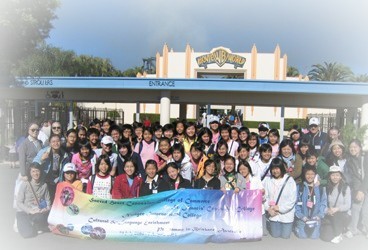
The study tour was organized by the Nedgee International
College, which offered English classes for our students
every morning and arranged a great variety of activities
in the afternoon. Students were given the opportunity to
be immersed in English, to become part of a family, to
integrate with local students, to develop some new hobbies
and to indulge in new experiences. Four teachers and
forty-five students, thirty-five of them from SFCC and seven of them from Sacred Heart Canossian College of Commerce, took part in this
overseas activity.
Comments from students:
- I knew better about myself and have learned to respect other cultures
- I made friends with students from different nationalities, such as Japanese, Korean and Thai. I had a great and memorable experience.
- Australians are so nice and friendly. I really
miss my host family.
- I learned better English and practised my
English more.Friendship - On the last day of our stay
in Brisbane, we cried, just because it is
so hard to say goodbye to our honestay
familites.
Fun - I tried many exciting rides in the
Dream World and the Movie World.
Freedom - Under the warm sun and the
clear sky, we relaxed in the school
backyard and our worries seemed to
distant.
Fruitful - We learnt about the Aboriginal
culture in lessons and through outings. We
also made friends from other countries!
Back to Top |